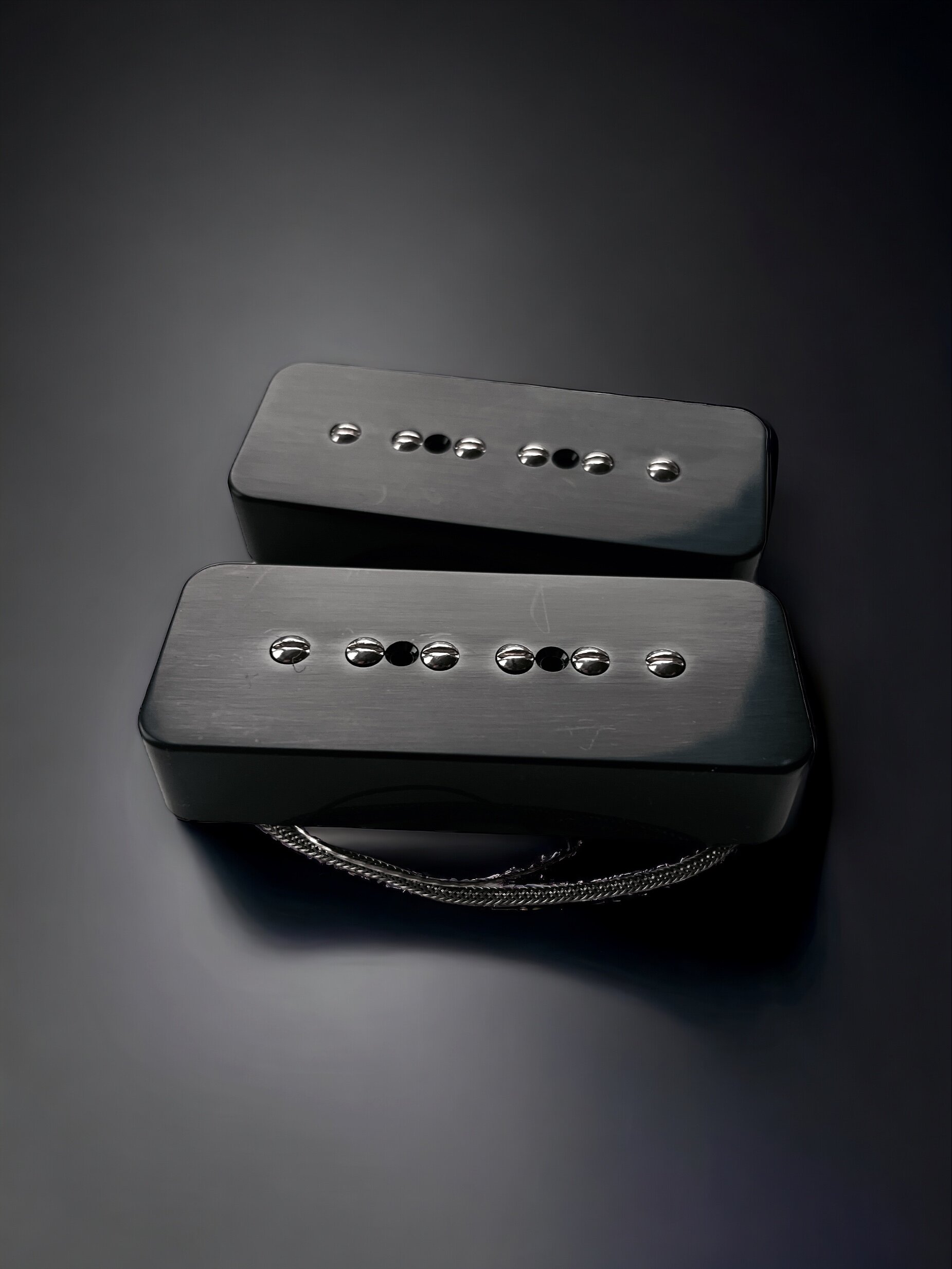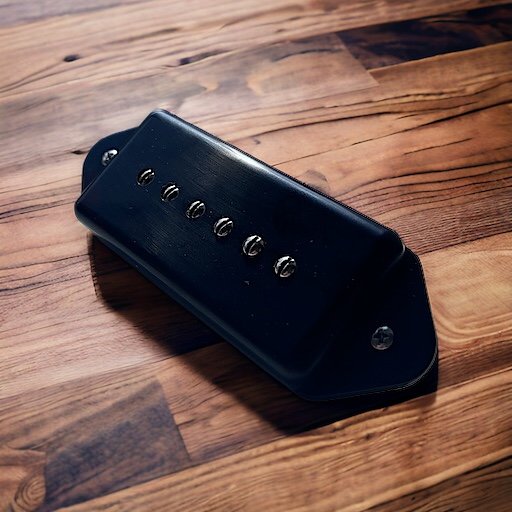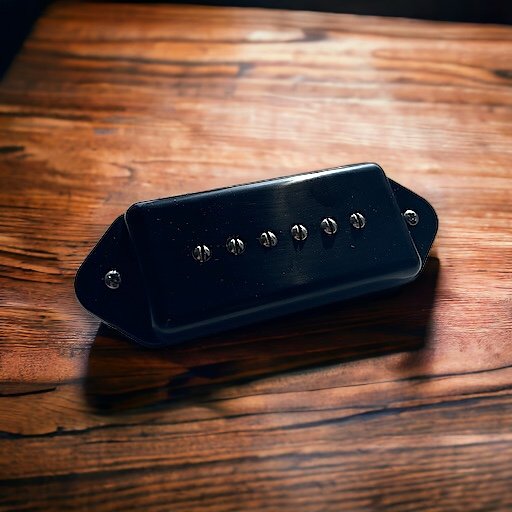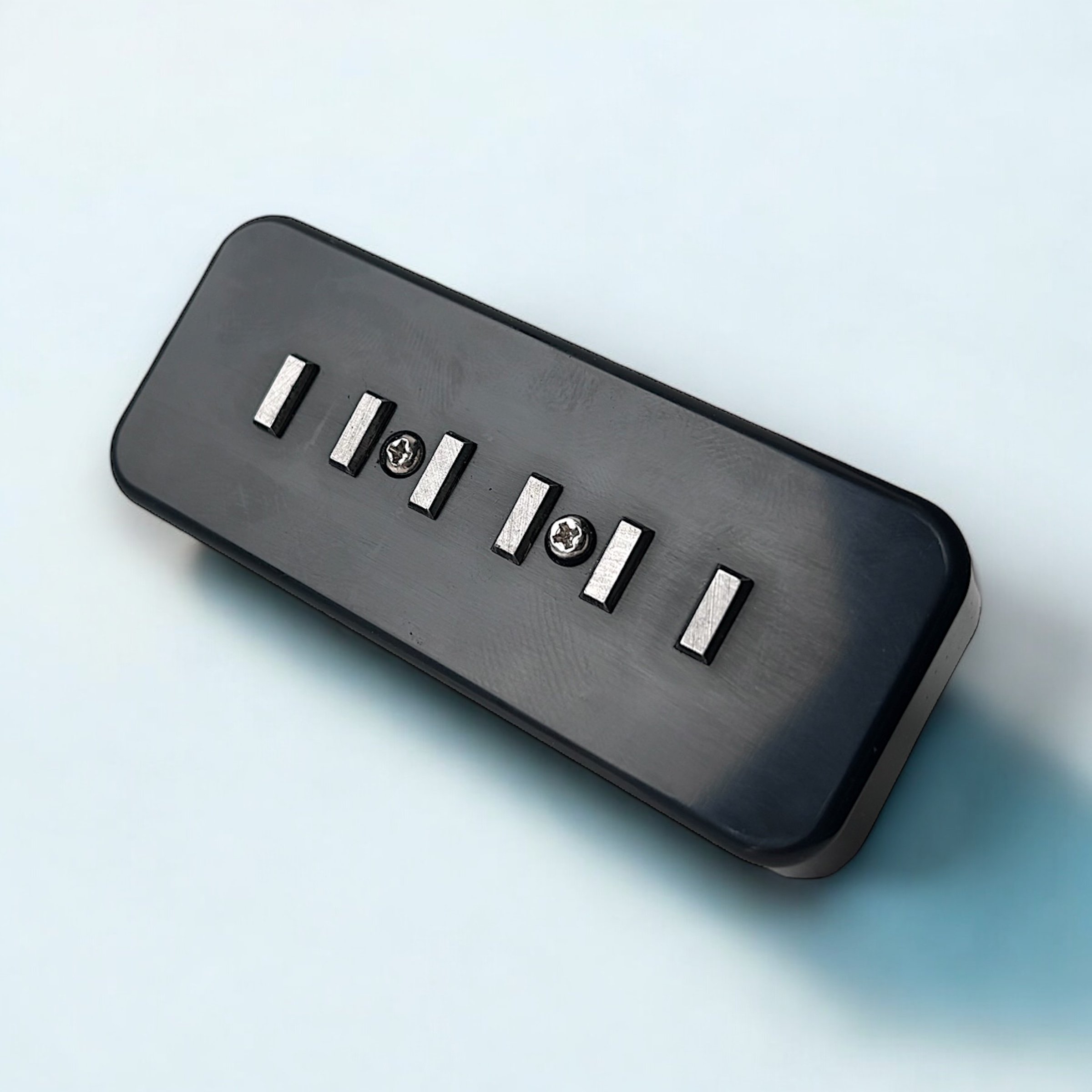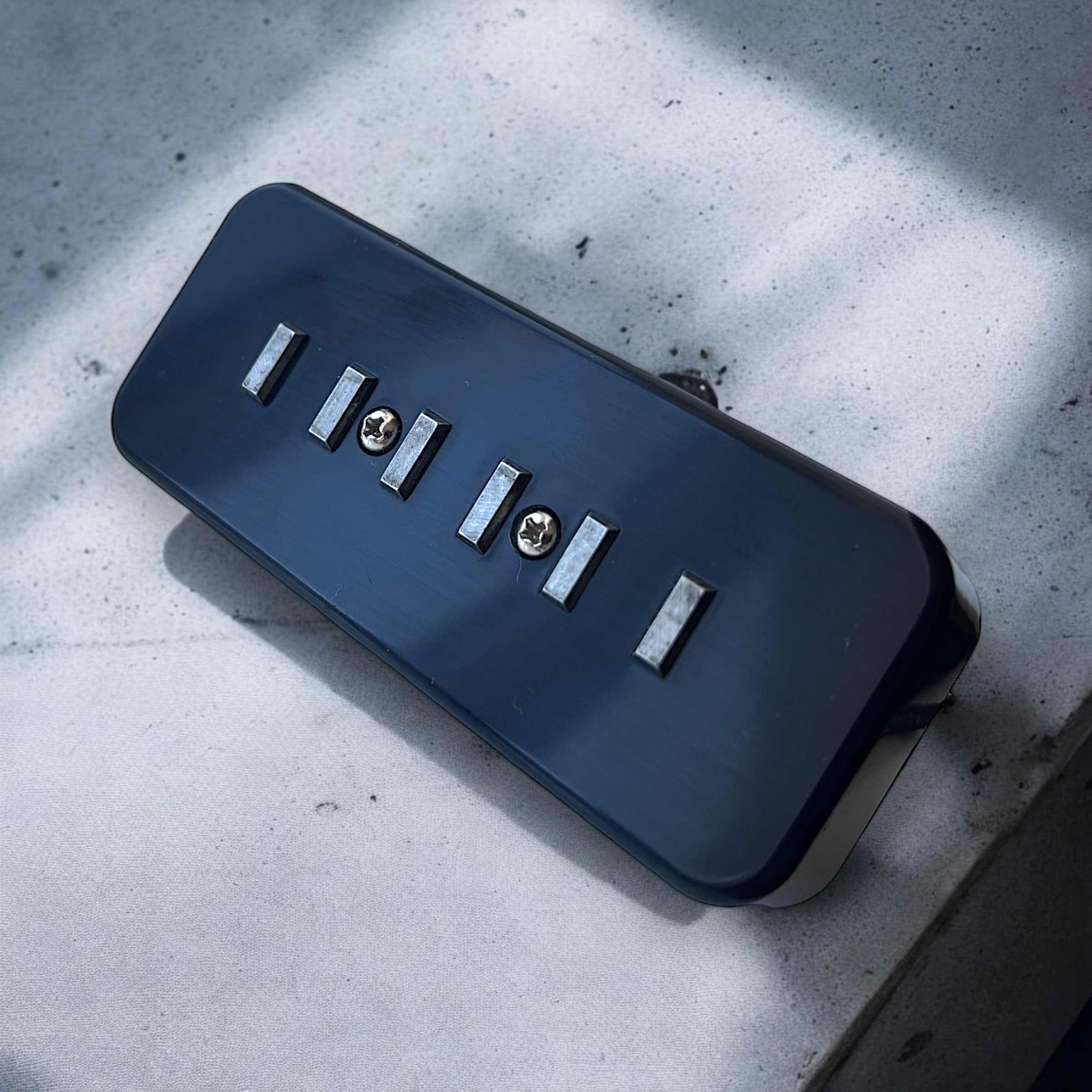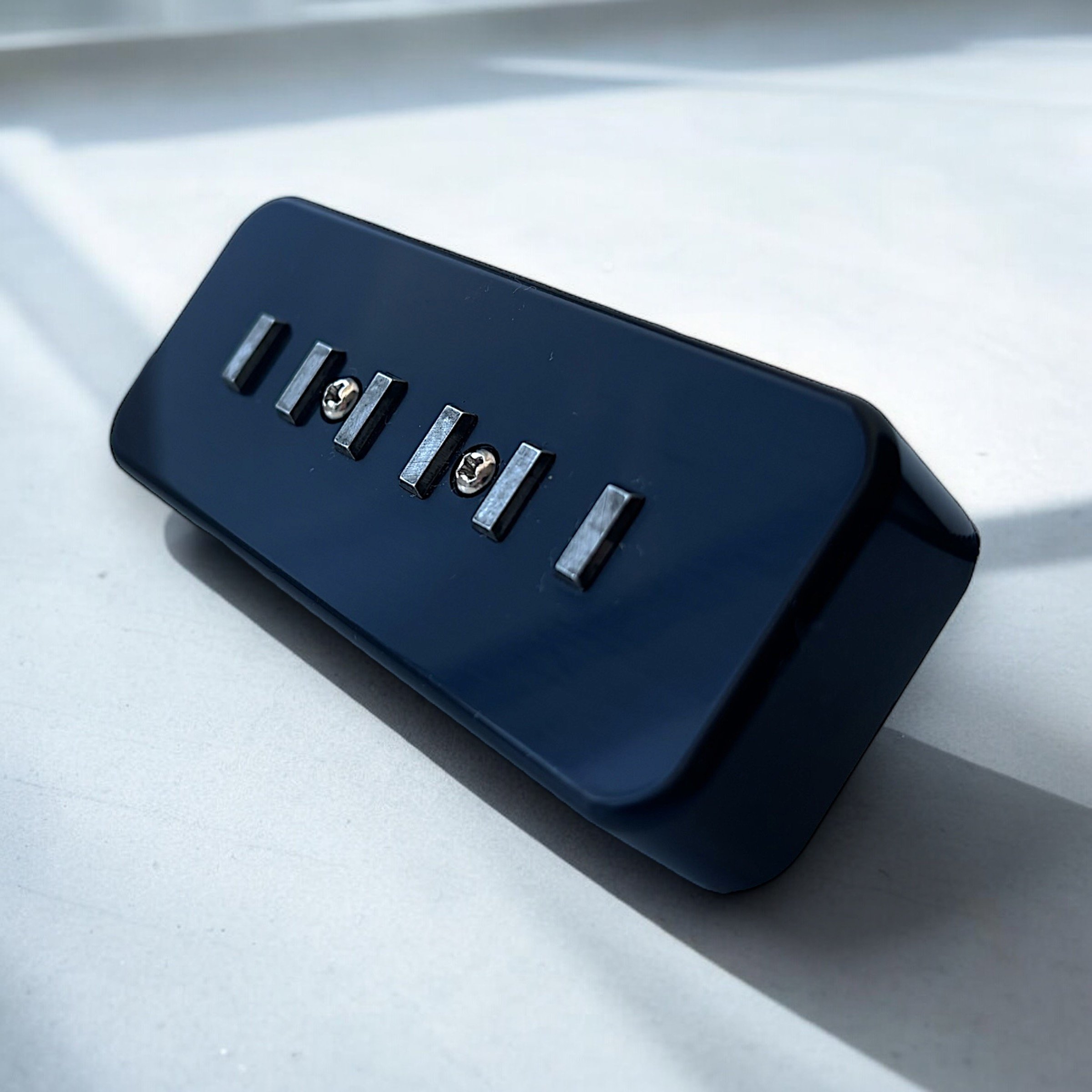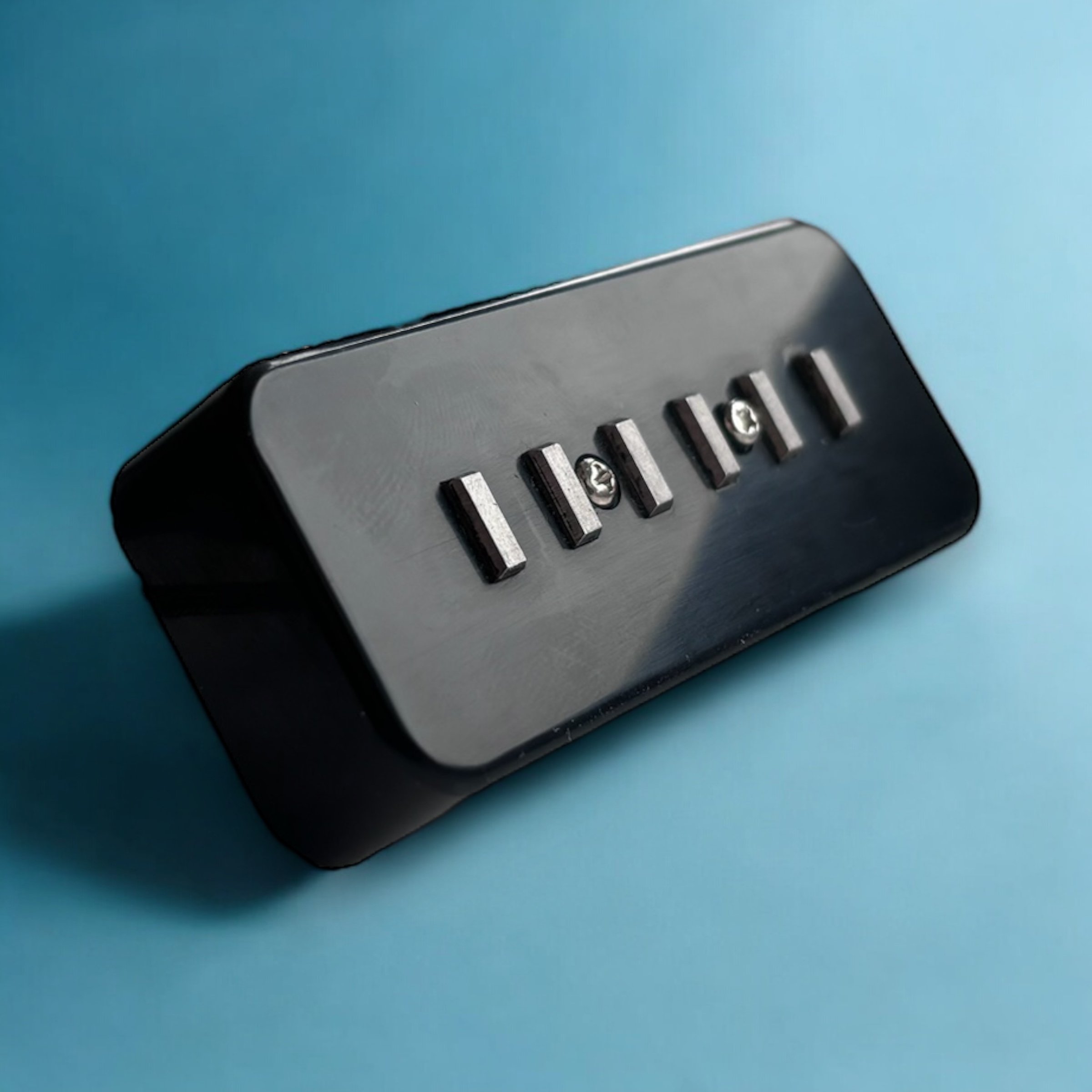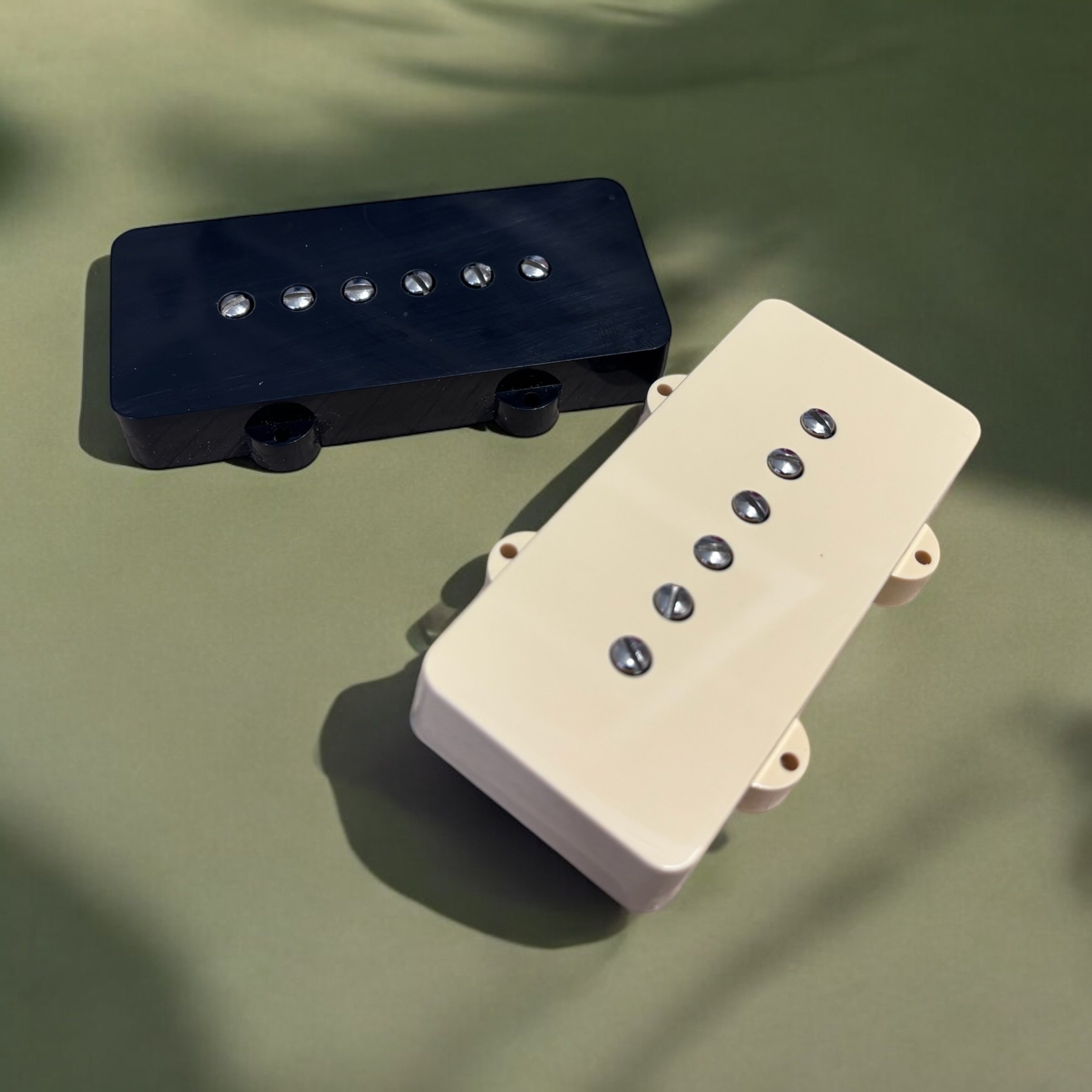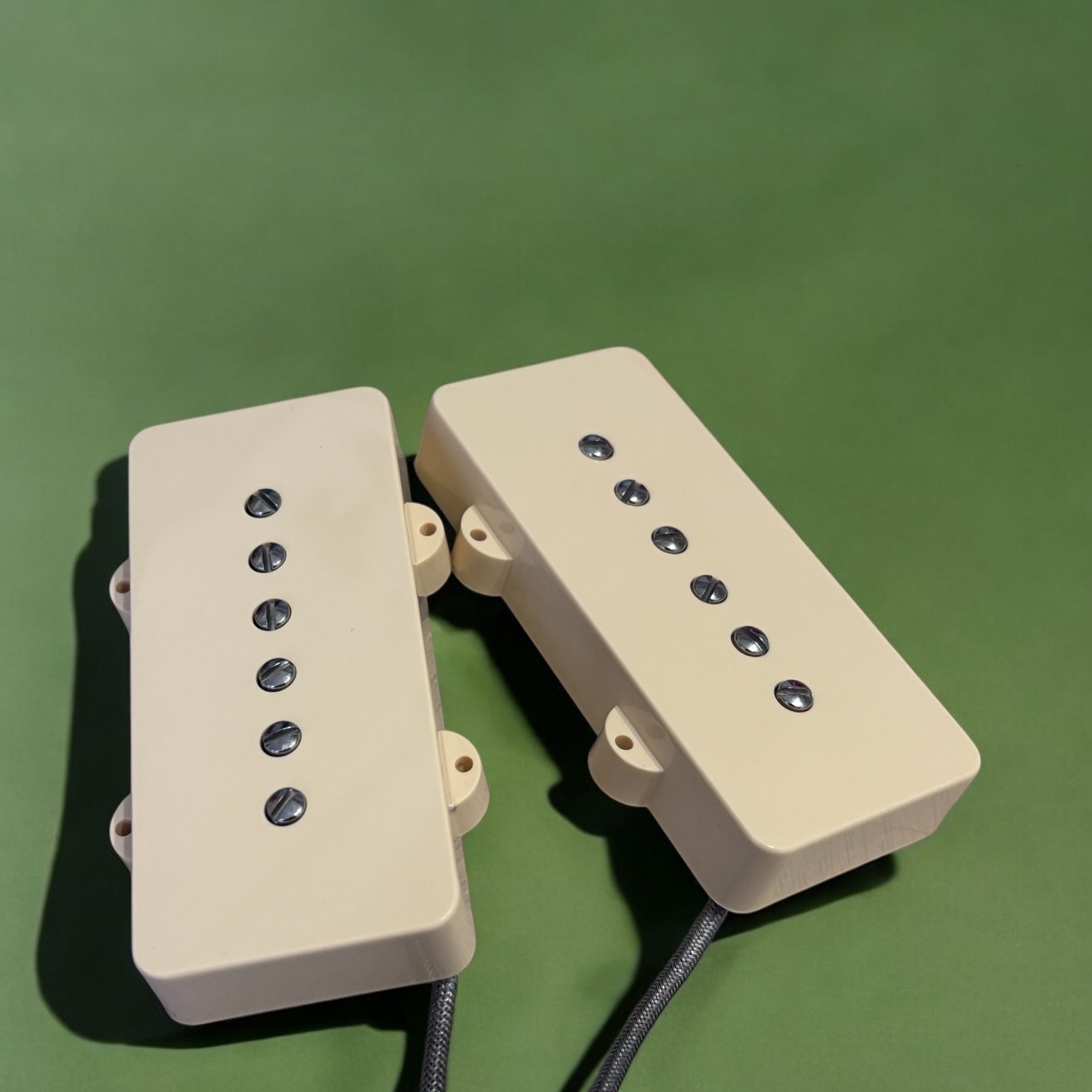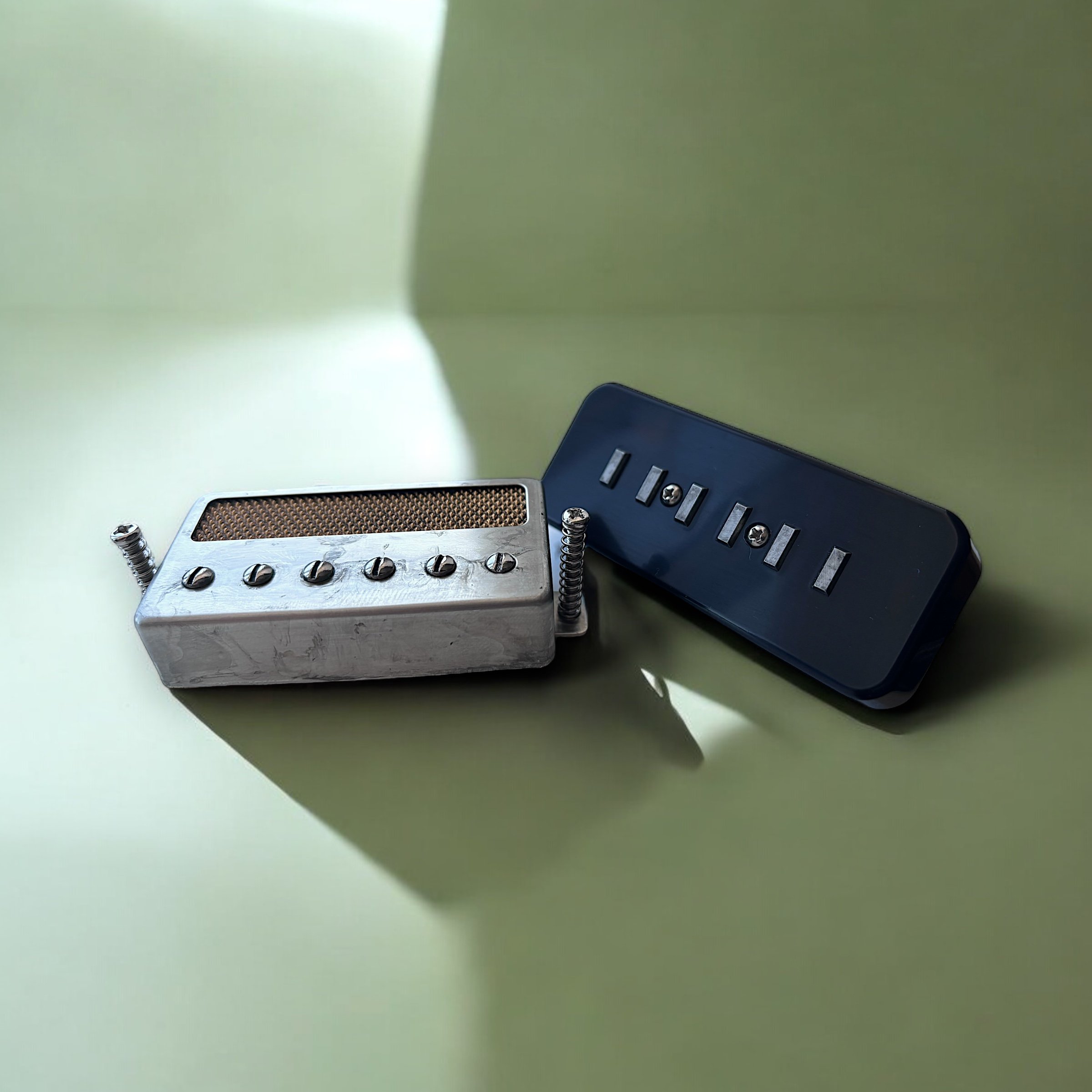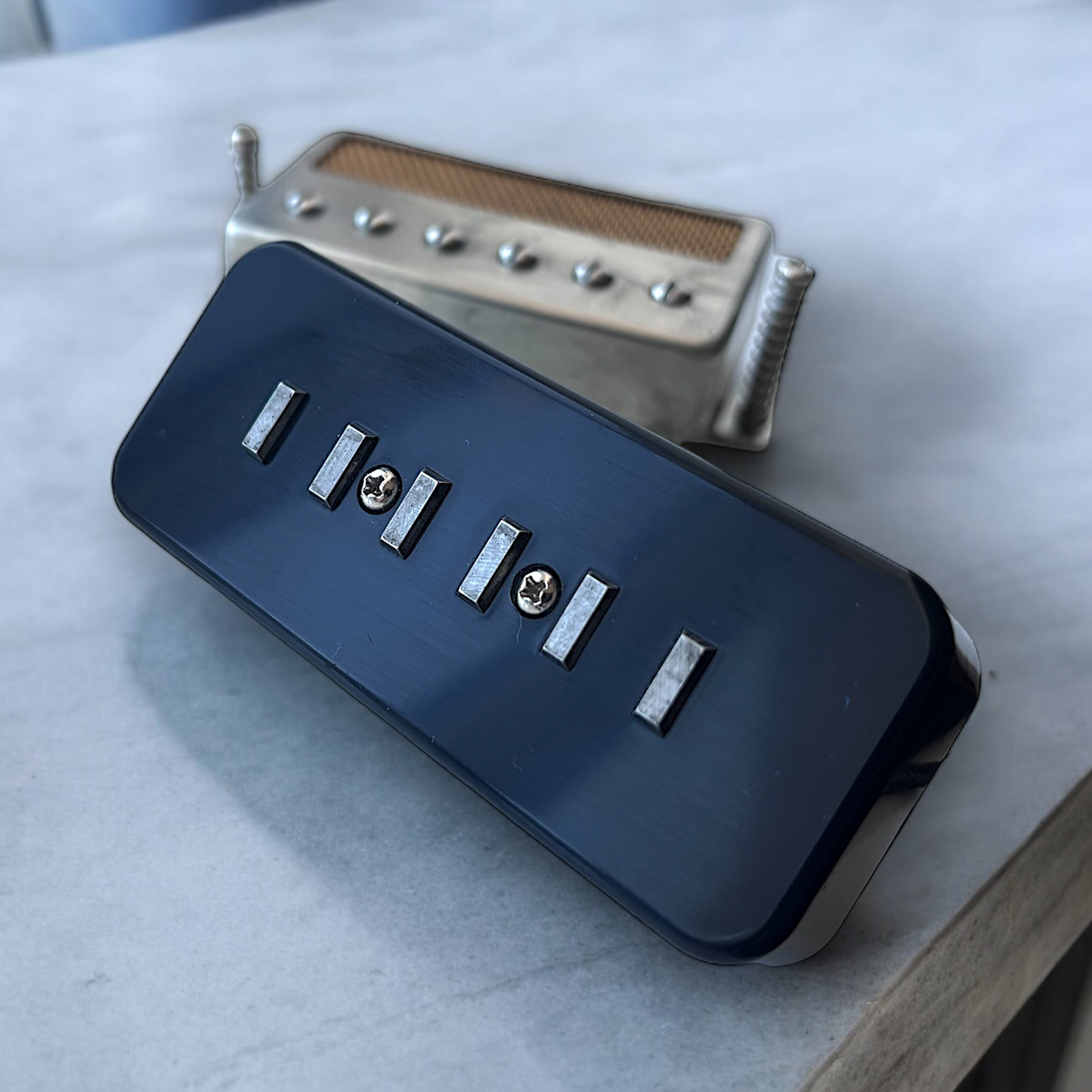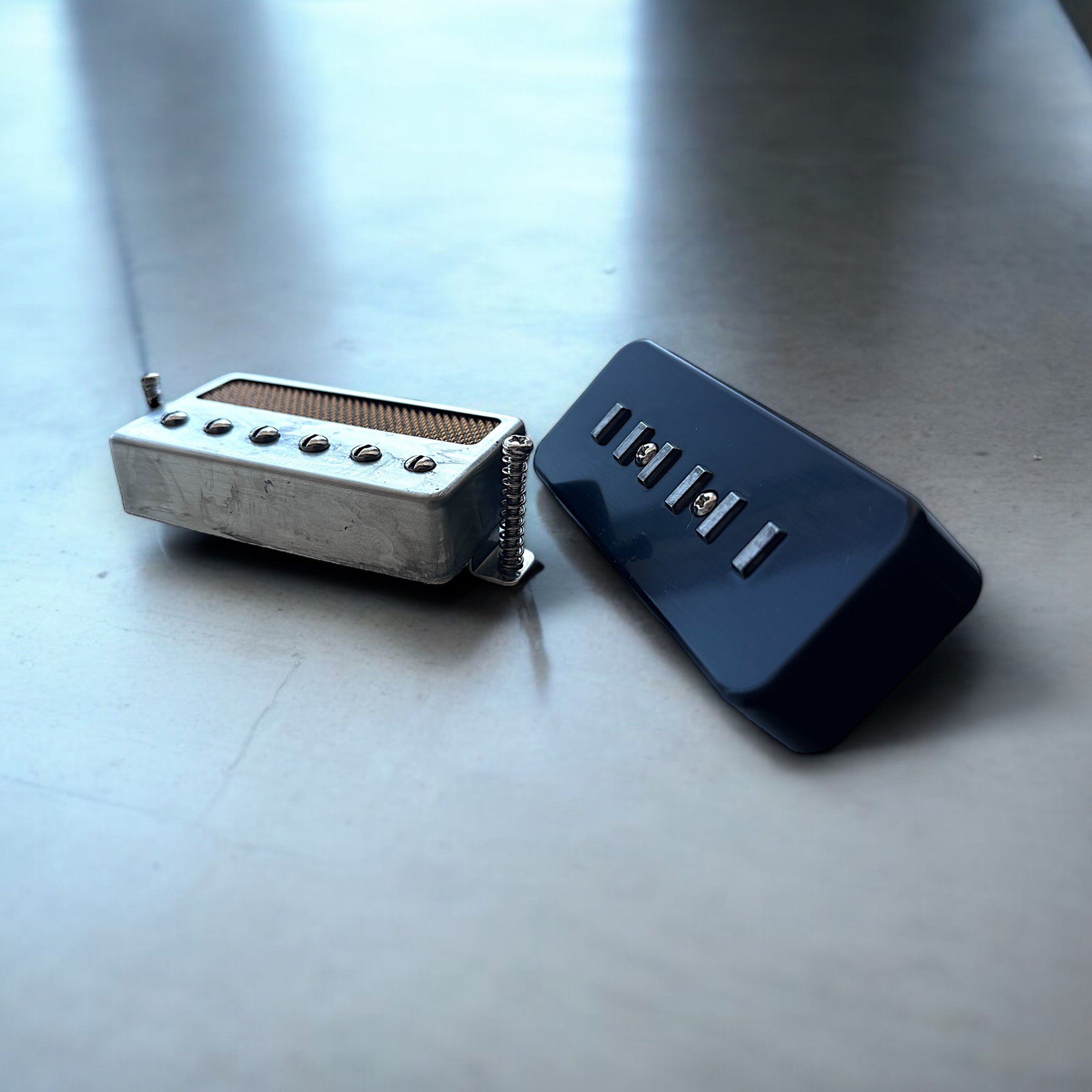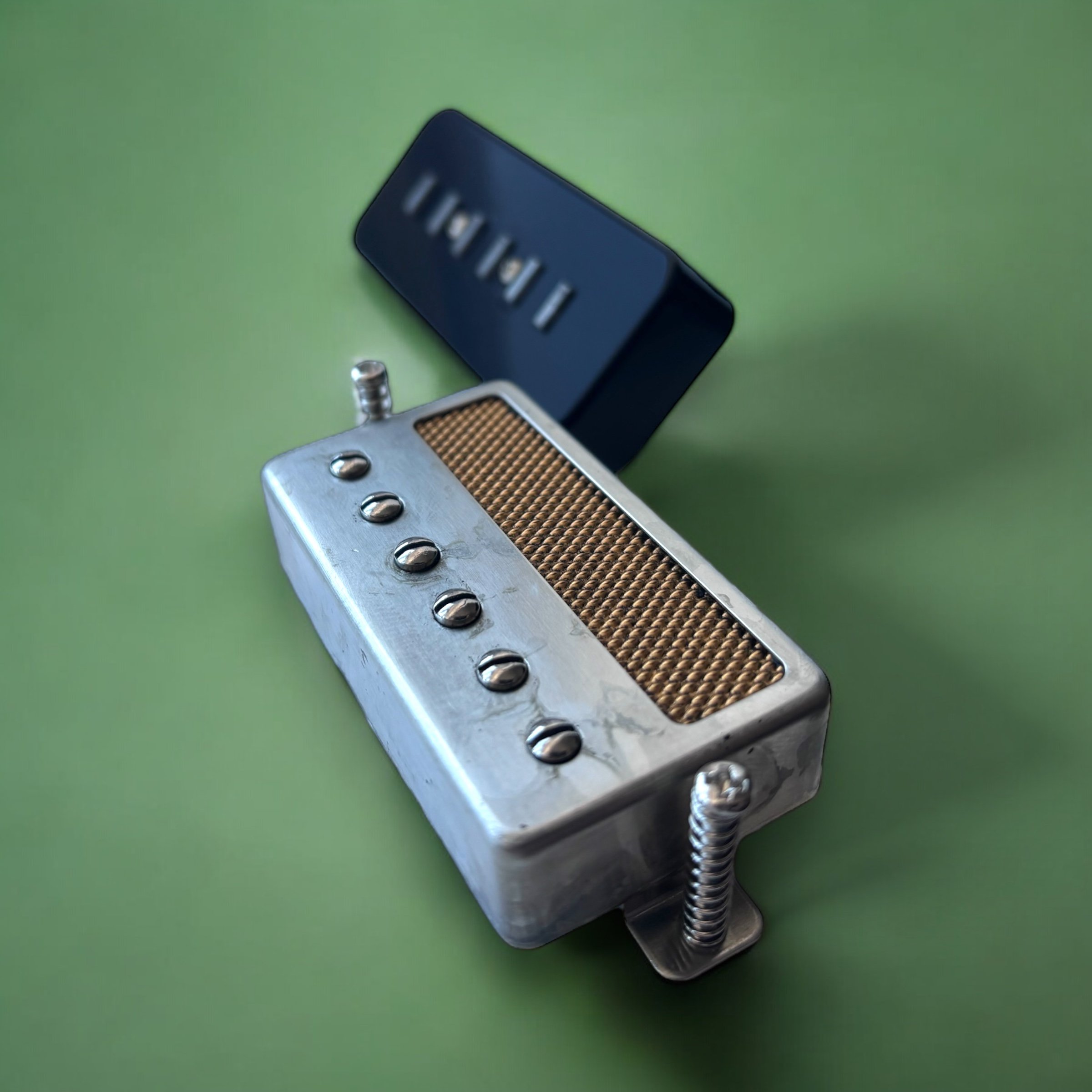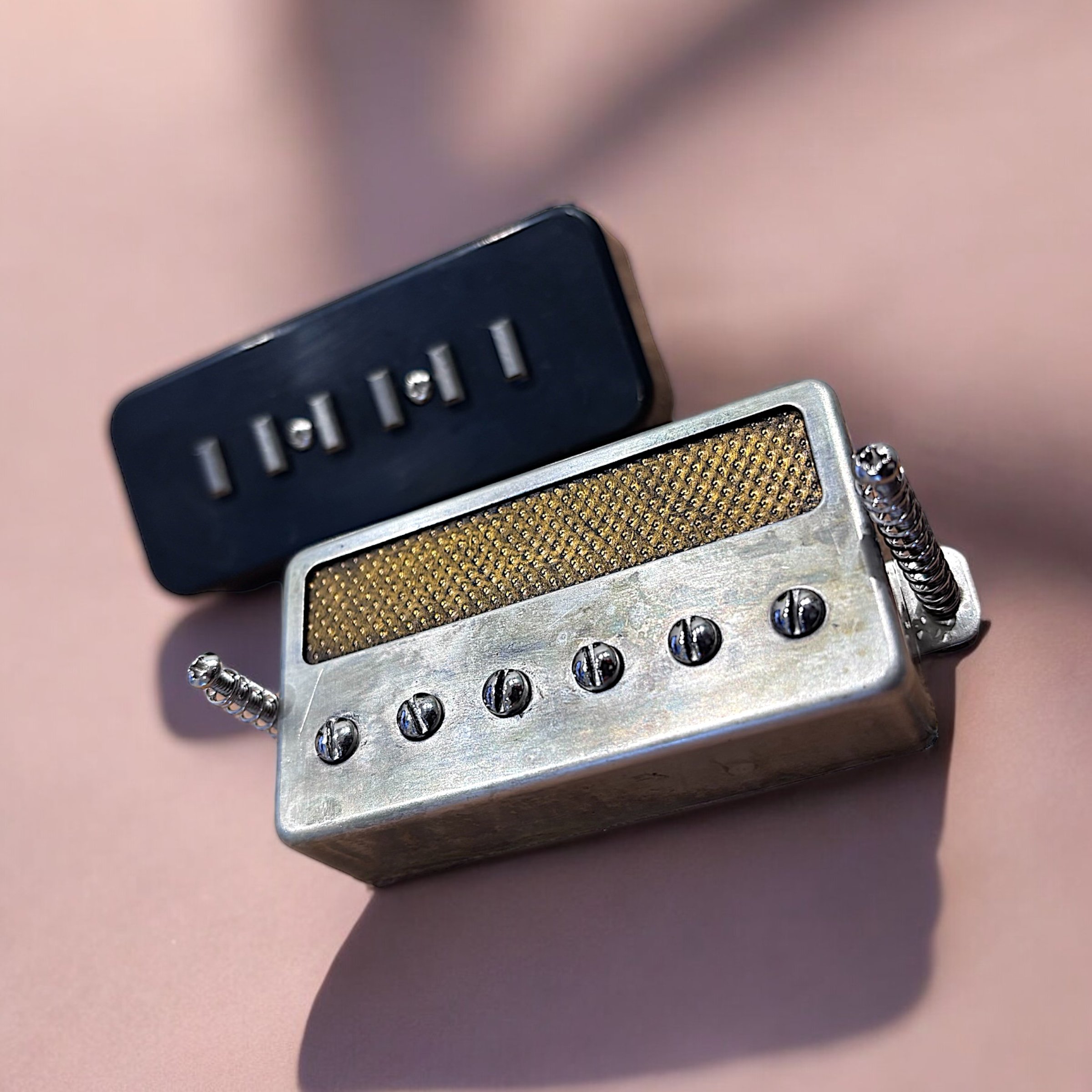The Green P90
Gibson crafted the P90s back in the 1940s specifically for their Lap steels. After some inconsistent manufacturing years (there’s some debate on what grade of magnets were used), from the late 50s they began utilising 42 AWG Plain enamel wire, powered by 2 Alnico 5 bar magnets. This design has remained unchanged since. Even today, if you desire that distinctive P90 tone, you're seeking that original blueprint.
If your guitar already boasts P90s, swapping them out for new ones won't drastically alter your sound. It's worth noting that P90s don't blend well with other pickups. We've all witnessed guitars with P90s in various setups, such as in the neck of telecasters, in the bridges of strats, or combined with humbuckers and single coils, resulting in tonal mismatches. P90s are substantial single coils, boasting high inductance that easily drives amps into distortion. If you insist on pairing a P90 with a different pickup, it's best to match it with a high-output rail or humbucker. Your average humbucker or single coil will be significantly quieter. In short, the optimal way to experience the true potential of a P90 is in a guitar equipped solely with P90s.
Tonally, P90s are loud, aggressive and abrasive, providing a refreshing change for those accustomed to humbuckers. They possess an irresistible charm that keeps players captivated. This unique tone stems from their design, featuring a wide shape, short coil, and steel poles resting on two bar magnets, resulting in low capacitance and high inductance.
With numerous P90 options available in the market, why should you choose mine? Well, I believe it's crucial to emphasise that the most significant distinction between a pricier P90 and a more affordable one lies in the coil wire. This element is pivotal. The base material and magnets have minimal impact on the overall tone. A higher-priced version should utilise 42 AWG wire, rather than the 0.063mm metric equivalent. This discrepancy in gauge affects the resonant peak, slightly diminishing its power. So, if you seek that coveted P90 tone at a reasonable price, these are the ones for you!
Specs:
Pole Spacing = 50mm
Wiring: Black- Hot, metal braid/bare- Ground
Magnets: Alnico V bar X 2
Resistance: 8k (+/- 5% )
Inductance: 6.4H (+/- 5% )
Wire: 42 AWG Plain Enamel
Handmade in Manchester UK
Gibson crafted the P90s back in the 1940s specifically for their Lap steels. After some inconsistent manufacturing years (there’s some debate on what grade of magnets were used), from the late 50s they began utilising 42 AWG Plain enamel wire, powered by 2 Alnico 5 bar magnets. This design has remained unchanged since. Even today, if you desire that distinctive P90 tone, you're seeking that original blueprint.
If your guitar already boasts P90s, swapping them out for new ones won't drastically alter your sound. It's worth noting that P90s don't blend well with other pickups. We've all witnessed guitars with P90s in various setups, such as in the neck of telecasters, in the bridges of strats, or combined with humbuckers and single coils, resulting in tonal mismatches. P90s are substantial single coils, boasting high inductance that easily drives amps into distortion. If you insist on pairing a P90 with a different pickup, it's best to match it with a high-output rail or humbucker. Your average humbucker or single coil will be significantly quieter. In short, the optimal way to experience the true potential of a P90 is in a guitar equipped solely with P90s.
Tonally, P90s are loud, aggressive and abrasive, providing a refreshing change for those accustomed to humbuckers. They possess an irresistible charm that keeps players captivated. This unique tone stems from their design, featuring a wide shape, short coil, and steel poles resting on two bar magnets, resulting in low capacitance and high inductance.
With numerous P90 options available in the market, why should you choose mine? Well, I believe it's crucial to emphasise that the most significant distinction between a pricier P90 and a more affordable one lies in the coil wire. This element is pivotal. The base material and magnets have minimal impact on the overall tone. A higher-priced version should utilise 42 AWG wire, rather than the 0.063mm metric equivalent. This discrepancy in gauge affects the resonant peak, slightly diminishing its power. So, if you seek that coveted P90 tone at a reasonable price, these are the ones for you!
Specs:
Pole Spacing = 50mm
Wiring: Black- Hot, metal braid/bare- Ground
Magnets: Alnico V bar X 2
Resistance: 8k (+/- 5% )
Inductance: 6.4H (+/- 5% )
Wire: 42 AWG Plain Enamel
Handmade in Manchester UK
Gibson crafted the P90s back in the 1940s specifically for their Lap steels. After some inconsistent manufacturing years (there’s some debate on what grade of magnets were used), from the late 50s they began utilising 42 AWG Plain enamel wire, powered by 2 Alnico 5 bar magnets. This design has remained unchanged since. Even today, if you desire that distinctive P90 tone, you're seeking that original blueprint.
If your guitar already boasts P90s, swapping them out for new ones won't drastically alter your sound. It's worth noting that P90s don't blend well with other pickups. We've all witnessed guitars with P90s in various setups, such as in the neck of telecasters, in the bridges of strats, or combined with humbuckers and single coils, resulting in tonal mismatches. P90s are substantial single coils, boasting high inductance that easily drives amps into distortion. If you insist on pairing a P90 with a different pickup, it's best to match it with a high-output rail or humbucker. Your average humbucker or single coil will be significantly quieter. In short, the optimal way to experience the true potential of a P90 is in a guitar equipped solely with P90s.
Tonally, P90s are loud, aggressive and abrasive, providing a refreshing change for those accustomed to humbuckers. They possess an irresistible charm that keeps players captivated. This unique tone stems from their design, featuring a wide shape, short coil, and steel poles resting on two bar magnets, resulting in low capacitance and high inductance.
With numerous P90 options available in the market, why should you choose mine? Well, I believe it's crucial to emphasise that the most significant distinction between a pricier P90 and a more affordable one lies in the coil wire. This element is pivotal. The base material and magnets have minimal impact on the overall tone. A higher-priced version should utilise 42 AWG wire, rather than the 0.063mm metric equivalent. This discrepancy in gauge affects the resonant peak, slightly diminishing its power. So, if you seek that coveted P90 tone at a reasonable price, these are the ones for you!
Specs:
Pole Spacing = 50mm
Wiring: Black- Hot, metal braid/bare- Ground
Magnets: Alnico V bar X 2
Resistance: 8k (+/- 5% )
Inductance: 6.4H (+/- 5% )
Wire: 42 AWG Plain Enamel
Handmade in Manchester UK


